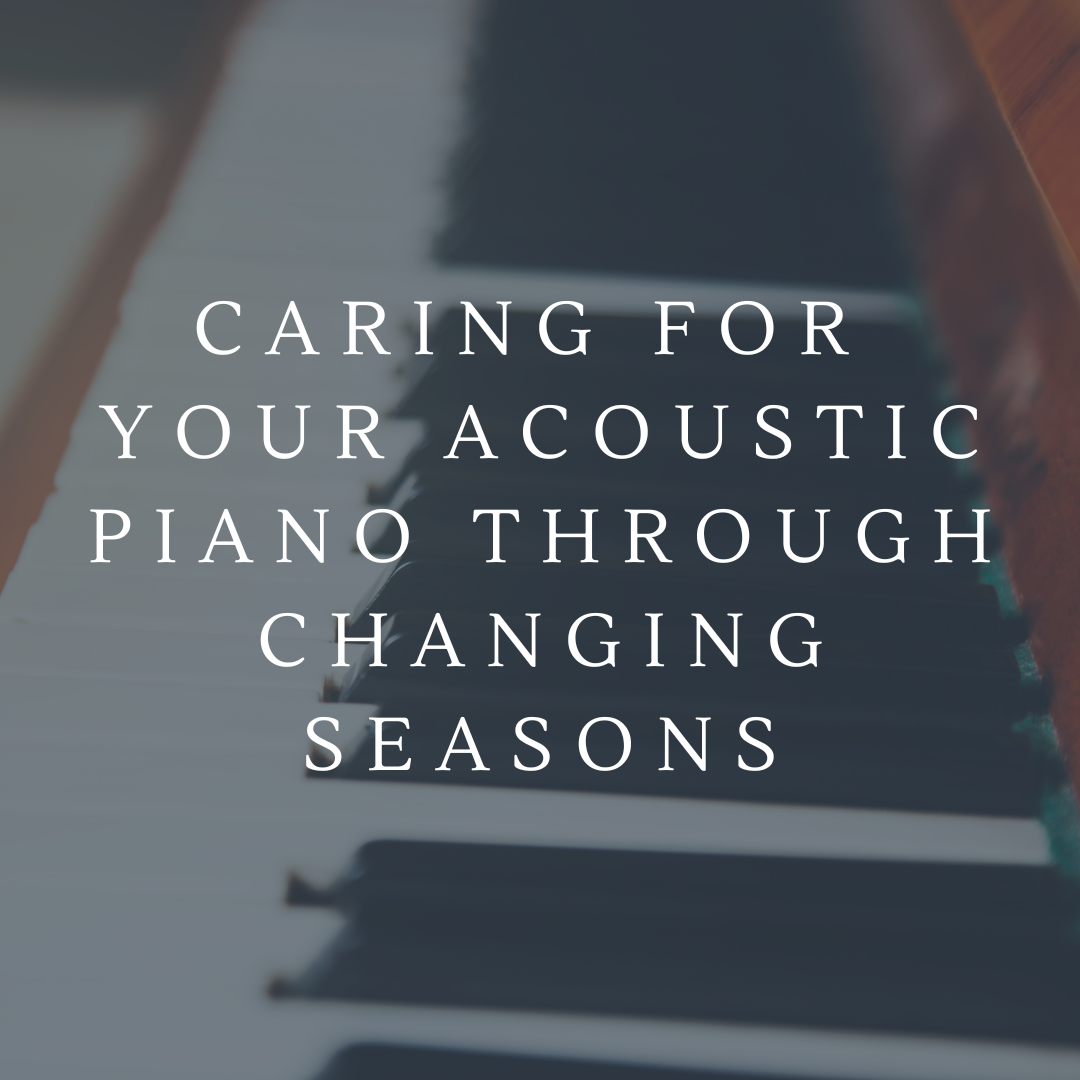
Acoustic pianos are more than just instruments; they're intricate works of art and craftsmanship. Their wooden structure, metal strings, and finely calibrated mechanisms are all highly sensitive to their environment. Seasonal changes in temperature and humidity can wreak havoc on your piano if not managed carefully. Here’s how you can keep your acoustic piano in pristine condition year-round.
Humidity Swings: Wood expands and contracts with changes in humidity, which can affect tuning stability, the soundboard, and even the keys.
Temperature Variations: Extreme heat or cold can cause structural stress and interfere with the action of the piano.
Seasonal Dust: Spring and summer often bring higher levels of dust and pollen, which can settle inside the instrument.
Pianos thrive in environments with a stable relative humidity of 40-50%.
Use a Hygrometer: Monitor the humidity levels in the room where your piano lives.
Invest in a Humidity Control System: Consider a piano-specific humidity control system, like a Dampp-Chaser, to protect against swings.
Avoid Extremes: Keep your piano away from sources of dryness (like heaters) or excessive moisture (like open windows during the rainy season).
Place the piano away from direct sunlight, which can fade the finish and increase heat exposure.
Avoid spots near drafty windows, vents, or fireplaces, as these create temperature and humidity fluctuations.
Changing seasons can knock your piano out of tune. Have it tuned at least twice a year—ideally after the major seasonal transitions (spring and fall). A qualified tuner can also check for any seasonal wear and tear.
Keys: Wipe with a damp, soft cloth and dry immediately. Avoid harsh chemicals.
Exterior: Dust the piano with a microfiber cloth. For polished finishes, use a piano-safe cleaner sparingly.
Interior: Leave the internal cleaning to a professional technician to avoid accidental damage.
Regular inspections by a technician can catch and address issues like sticking keys, fluctuating regulation, or cracks in the soundboard that may arise with seasonal changes.
Spring: Pollen and dust—keep the piano lid closed when not in use, and dust frequently.
Summer: High humidity—keep a dehumidifier handy if you live in a damp climate.
Autumn: Temperature drops—this is a good time for a professional tuning.
Winter: Dry air—use a humidifier to combat the dryness caused by indoor heating systems.
Your piano isn’t a piece of furniture; it’s an heirloom, a creative outlet, and an investment. Protecting it from the effects of the changing seasons ensures it remains a source of joy and music for years to come.
By staying proactive and mindful, you can safeguard your acoustic piano and enjoy its beautiful sound no matter the time of year.

For many pianists—beginner, intermediate or advanced—the holiday season brings a mix of joy and pressure: guests come, schedules shift, practice time can drop. But with a little intentionality, you can use this period as a springboard rather than a pitfall.

When it comes to selecting, caring for, or upgrading a piano, brand heritage and construction quality play a huge role. Here we take a look at two major names in the field: Yamaha and Hailun.

There’s a subtle shift that happens in homes as we move from the rich tones of autumn into the sparkle of December. Your piano space doesn’t have to stay static—it can evolve with the season.